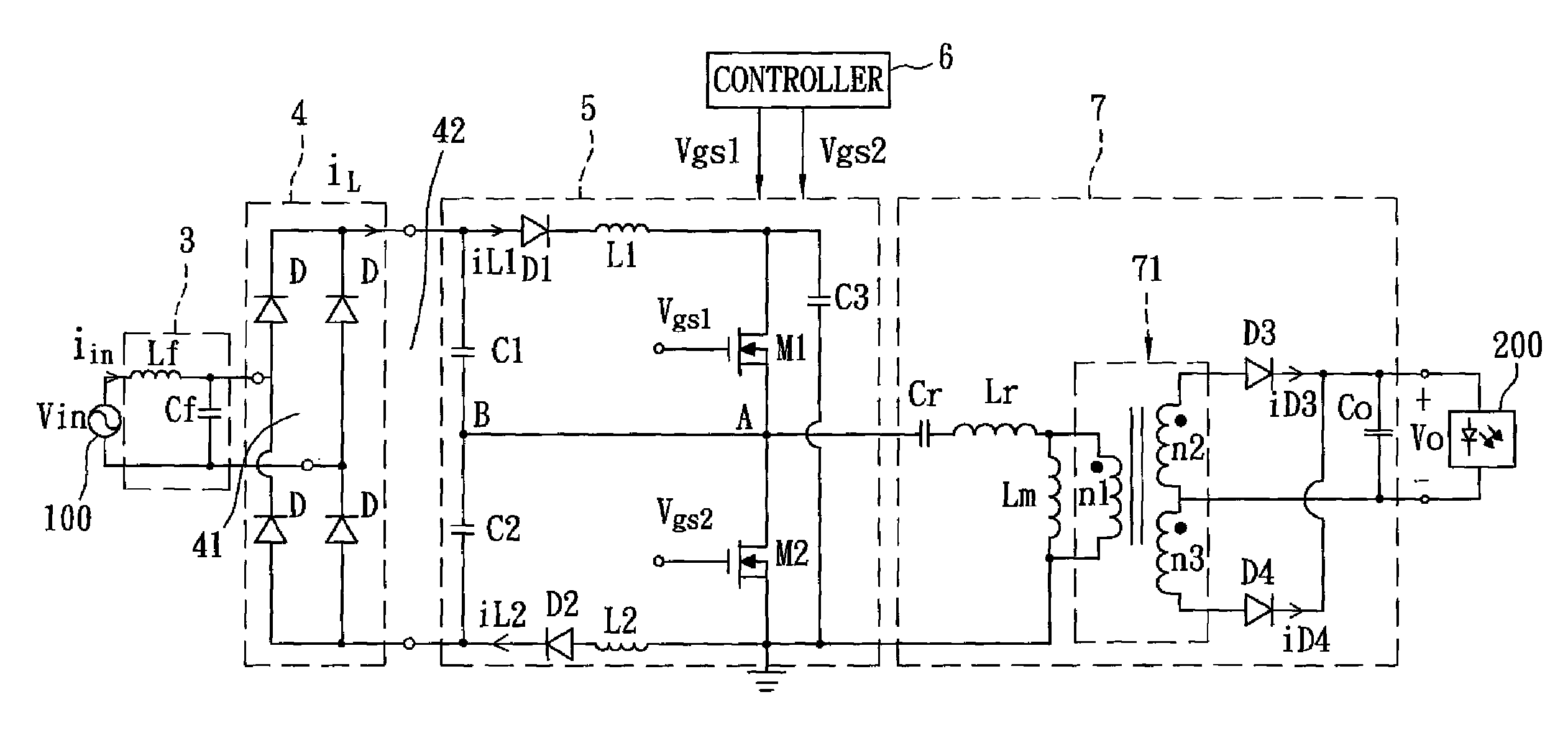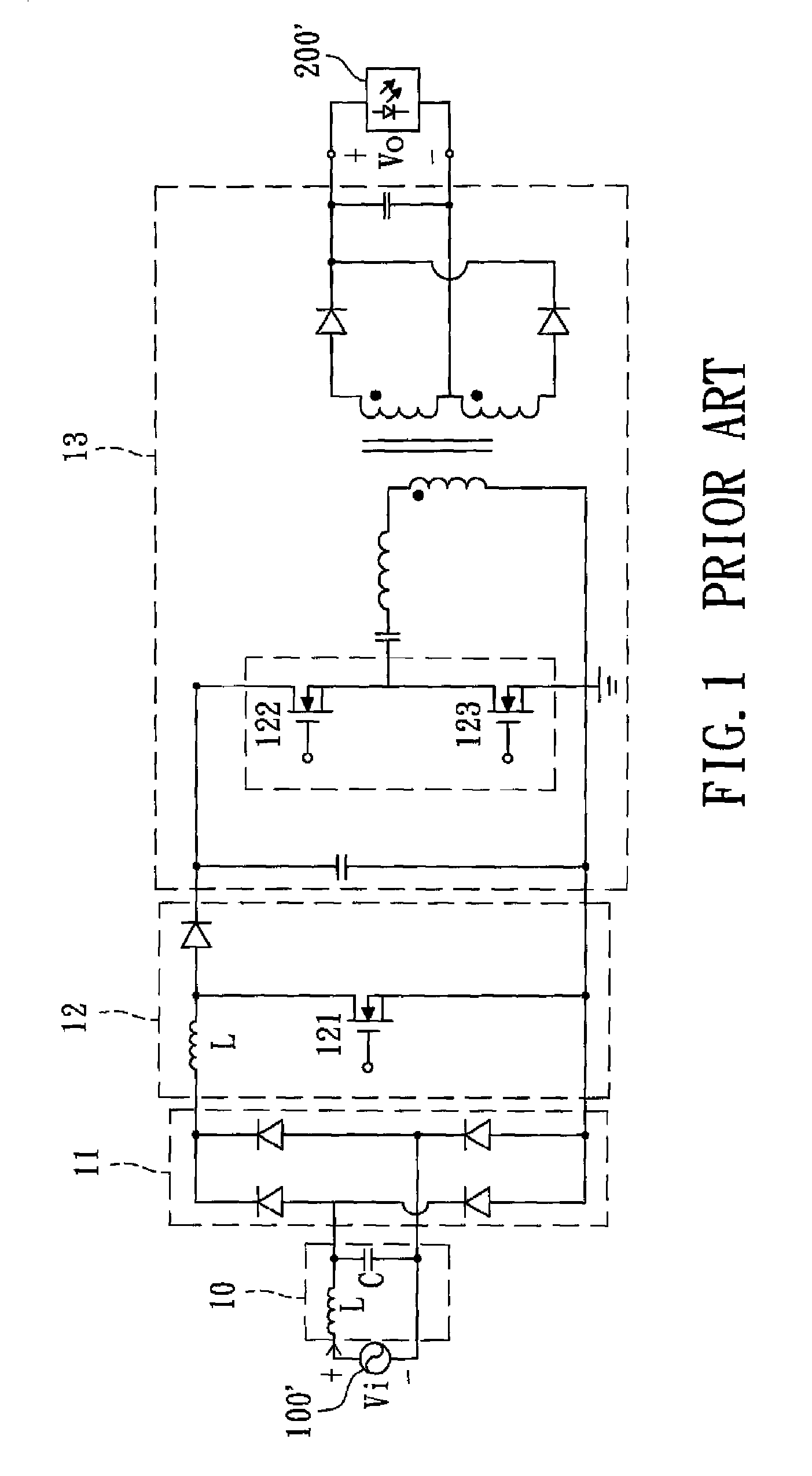AC-to-DC power converting device
a power conversion device and converting device technology, applied in the field of ac-to-dc power conversion devices, can solve the problems of increasing power consumption of the industry, a relatively large volume, and inability to achieve zero-voltage switching of the second and third switches, etc., to achieve the effect of eliminating high-frequency nois
- Summary
- Abstract
- Description
- Claims
- Application Information
AI Technical Summary
Benefits of technology
Problems solved by technology
Method used
Image
Examples
Embodiment Construction
[0043]Referring to FIG. 2, the preferred embodiment of a power converting device according to the present invention is shown to be adapted for converting an AC input voltage (vin) supplied by an external power source 100 to a DC output voltage (Vo). The DC output voltage (Vo) is used to drive an LED module 200 that serves as a load. The power converting device includes a filter 3, a full-bridge rectifier 4, a power factor corrector 5, a controller 6, and a step-down converter 7.
[0044]The filter 3 includes an input inductor (Lf) and an input capacitor (Cf) connected in series, and is adapted to be coupled to the external power source 100 for filtering the AC input voltage (vin) therefrom to eliminate high-frequency noises and electromagnetic interference.
[0045]The rectifier 4 includes four diodes (D), and has an input side 41 coupled across the capacitor (Cf) of the filter 3 for receiving the AC input voltage (vin) filtered by the filter 3, and an output side 42. The rectifier 4 rect...
PUM
 Login to View More
Login to View More Abstract
Description
Claims
Application Information
 Login to View More
Login to View More - R&D
- Intellectual Property
- Life Sciences
- Materials
- Tech Scout
- Unparalleled Data Quality
- Higher Quality Content
- 60% Fewer Hallucinations
Browse by: Latest US Patents, China's latest patents, Technical Efficacy Thesaurus, Application Domain, Technology Topic, Popular Technical Reports.
© 2025 PatSnap. All rights reserved.Legal|Privacy policy|Modern Slavery Act Transparency Statement|Sitemap|About US| Contact US: help@patsnap.com



